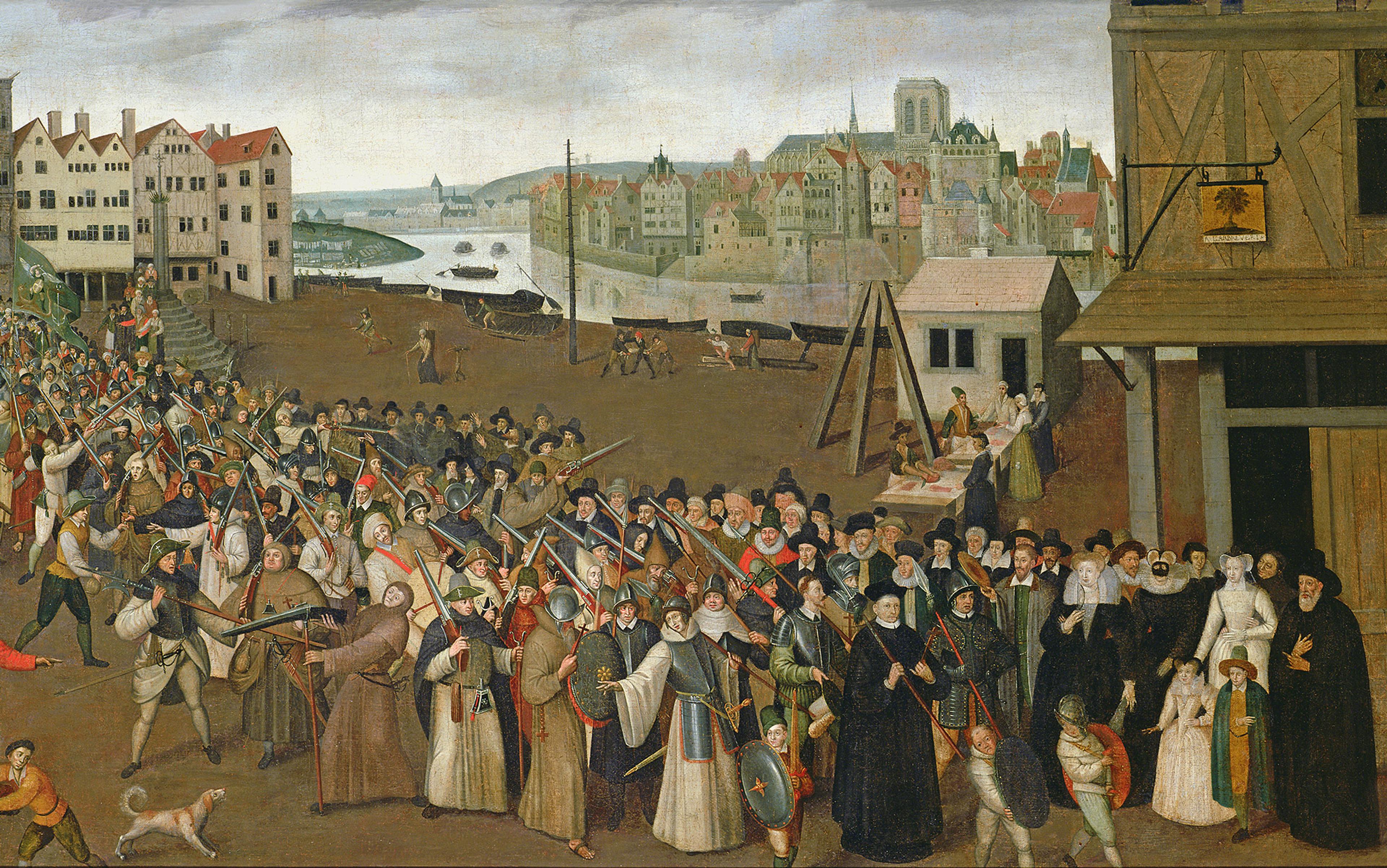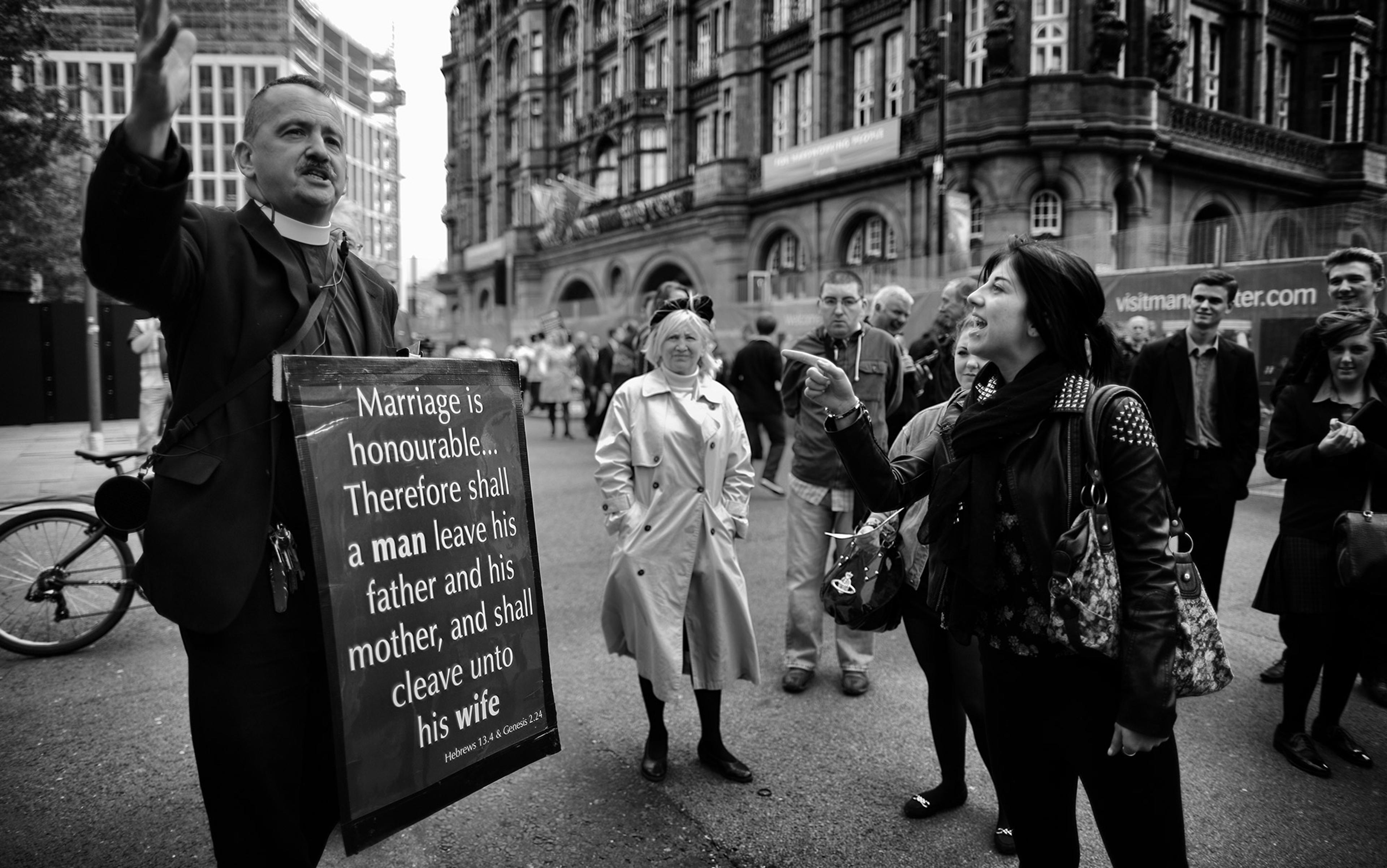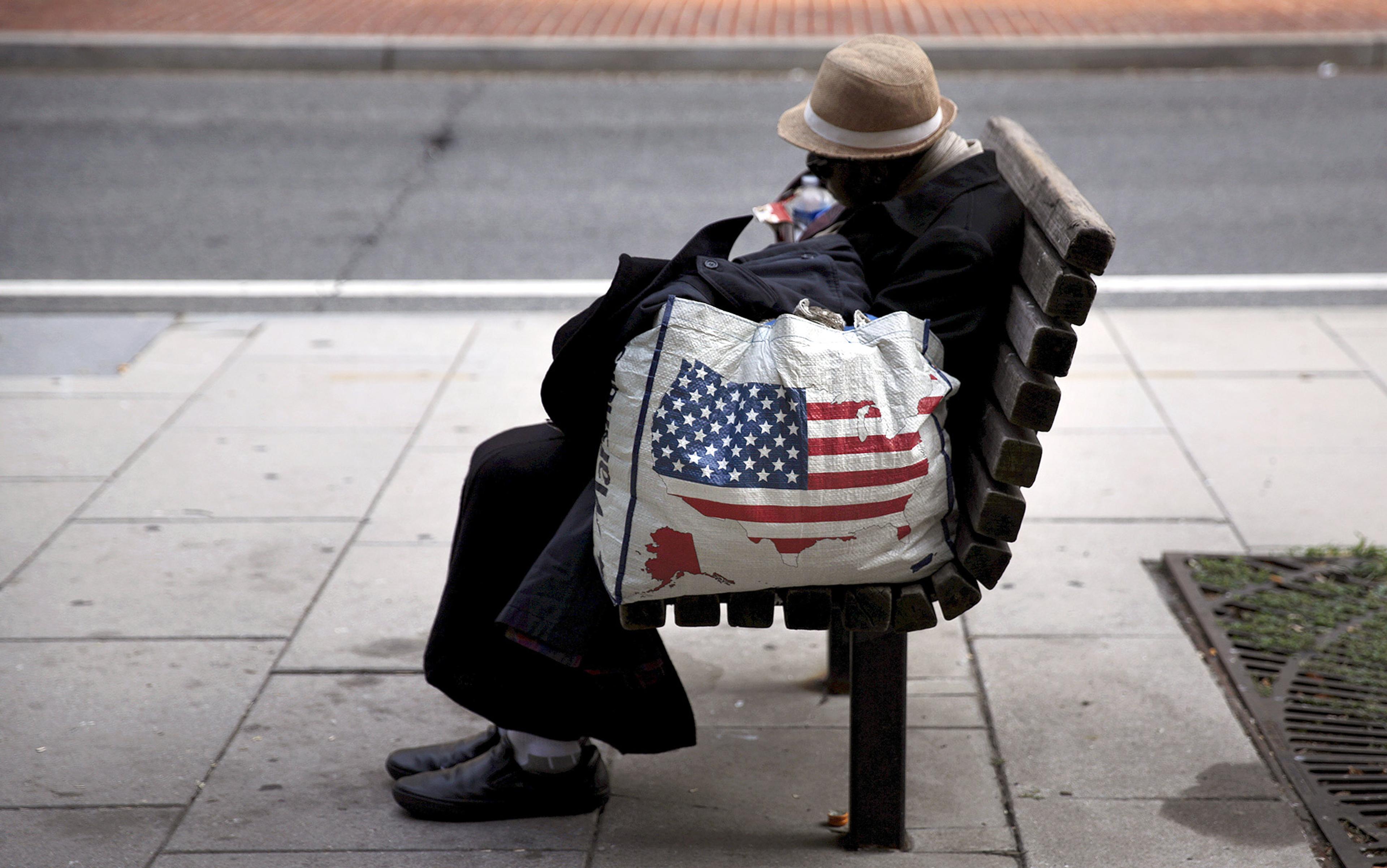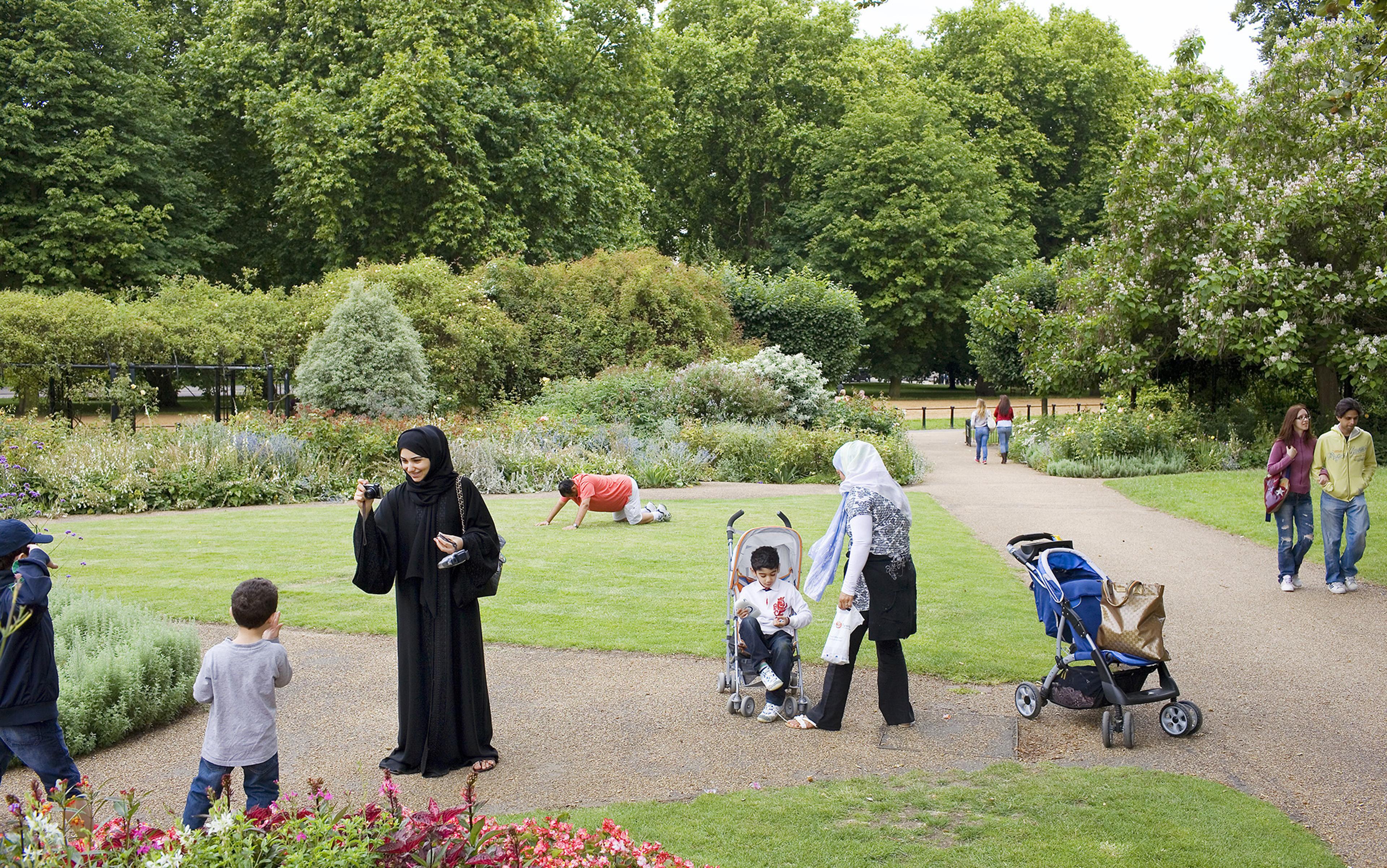The purpose of religious tolerance has always been, and remains, to maintain the power and purity of the dominant religion in a given state. Most dominant religions in most states today profess tolerance, but they also seem to feel especially threatened. Religious nationalist movements in the United States, Europe, India, Turkey and Israel all want to strengthen the relationship between state identity and the dominant religion. In each case, democratic elections have reinforced the significance of the majority’s religion to the meaning of state and nation, elevating the power of that religion. We can see a rising chauvinism in the mix of Catholicism and politics in eastern Europe today that portrays liberals and communists (often a code for ‘Jews’) as enemies. We can see a similar dynamic in the Turkish celebration of the Ottoman conquest of Constantinople in 1453. And we can also see it in the reemerging influence of Evangelicals in the US, as defenders of ‘religious liberty’ in their associations and businesses, and against ‘Sharia’ – as they imagine it – in the public sphere.
Even as religious nationalism gains strength, claims to membership in the ‘West’ rest in large part on a political avowal of religious tolerance. When religious nationalists claim the mantle of tolerance based on the legal protections that exist for religious minorities in their states, they are not wrong. Tolerance has indeed historically been a framework for people fundamentally different from one another to live peacefully together. Which is precisely why it is time to dispense once and for all with tolerance as a model for relations between groups.
Tolerance skepticism has a long history, stretching back to the German author J W Goethe, who said ‘to tolerate is to insult’. It faced a sustained critique after the Second World War from philosophers and political theorists such as Karl Popper, Herbert Marcuse and many others who saw liberal tolerance as guilty of passively acquiescing to the rise of fascism in the first half of the 20th century. Where Popper saw that a liberal society required repression of some intolerant views for self-preservation, Marcuse saw liberalism’s tolerance of injustice as the problem itself.
Following Marcuse, in the 1960s the New Left asked if the idea of tolerance – especially of speech and political diversity – served only to shield governments, corporations and the elite in continuing policies of economic and racial oppression. More recently, a school of international-relations scholarship has emerged emphasising how the foreign policy guiding Western governments now divides the world between the tolerant and the intolerant in much the same way that it has always distinguished between the civilised (whites) and the barbaric (everyone else). Even so, the question of how tolerance – religious tolerance in particular – could be a tool of domination strikes many people as counterintuitive or perverse. Tolerance is deeply rooted in the canon of apparent modern ideals: as an inherent good, a necessary individual ethic, a pillar of Western civilisation and proof of its superiority.
Yet tolerance, as an idea and an ethic, obscures the interaction between individuals and groups on both a daily basis and over the longue durée; the mutually reinforcing exchange of culture and ideas between groups in a society is missing in the idea of tolerance. Groups do not interact in isolation, they share reciprocally, sometimes intentionally and sometimes inadvertently. If it is true that a global society exists, what its best parts embody today is not tolerance, but reciprocity, the vital and dynamic relationship of mutual exchange that occurs every day between individuals and groups within a society. For teachers, journalists and politicians to begin to speak in terms of reciprocity instead of tolerance will not do away with intolerance or prejudice. But words are important and, as much as they reflect our thoughts, they also shape how we think. Idealising tolerance embeds dominance. Speaking in terms of reciprocity instead of tolerance would both better reflect what peaceful societies look like, and also tune people’s minds to the societal benefits of cultural exchange.
The idea of tolerance owes its origins in part to the Augustinian tradition of the early Christian Church, which was greatly concerned with defining the boundaries of the Christian community. How could Christians live peacefully with people they believed to have crucified their god? St Augustine’s position on the Jews held that these crucifiers should be allowed to live in the midst of Christians and to bear witness to the fate of those who reject Christ. Jews would remain on the outside of the holy Christian community – tolerated, as a remnant of the pre-Christian past. But Christian tolerance of Jews also created a theological problem: how to square the premise of God’s punishment of the Jews with the simultaneous reality of Jewish agency, sometimes prosperity, and sometimes power (even over Christians).
To take one example, during Poland’s late-medieval and early modern expansion, the need for mobile, literate managers with commercial experience (and preferably few political demands) led the Polish nobility and the Crown to welcome Jews to Poland to fulfil important socioeconomic roles. Some towns in the 14th century wrote charters for the Jews, outlining explicitly their freedom to organise their autonomous religious and communal life for the benefit of mutual Jewish and Christian prosperity. Yet this prosperity also brought increased competition between Jews and Christian burghers, to whom, by the 16th century, the Crown granted in some towns the Privilegium de non tolerandis Judaeis (the right not to tolerate Jews). The town of Lublin received such a privilege in 1535, but then the Jews, who formed a Jewish town at the foot of the castle walls (on the outside) received a parallel privilege, de non tolerandis Christianis in 1568. These arrangements successfully created a stable society with co-dependent and reciprocal relationships between groups, even while the goal of tolerance for all parties remained the greatest possible isolation, or perhaps insulation, from one another.
Islam, Buddhism, Confucianism, Sikhism and many other civilisations have historically maintained their own traditions of religious tolerance. On the other hand, Europe’s Reformations, if anything, expanded intolerance. The Reformation made stamping out heresy a marker of religious devotion. Before the compromises required for different Christians to live among one another were made, violent religious wars plagued Europe for 100-plus years in the wake of the Protestant and Catholic reformations (from the mid-16th to the mid-17th century). Legal tolerance might have been the winning solution to resolve that century-long descent into fratricide but, for a long time after the reformations, intolerance was seen as a worthwhile theological attribute. A Christian refusal to tolerate significant deviation from doctrinal orthodoxy – or the Jew or the Muslim, or the ‘heathens’ and ‘savages’ whom Europeans were first encountering in their Age of Discovery – was a marker of holiness and purity, and of a leader’s willingness to put spiritual matters above earthly concerns. A certain notion of tolerance, and the necessity of freedom of conscience in places where the balance of military power was not held overwhelmingly by one group or another, did indeed grow from the reformations and the wars of religion. But it took many years, with dramatic downs and ups, for the idea of tolerance to become a positive good valued in European society.
Tolerance was not a virtue brought to America: it was imposed by Europe to administer its overseas empires
For the first English theorists of tolerance such as John Locke, tolerance was necessary first and foremost to protect Christianity and Christians’ souls. As Locke put it, ‘that I esteem that toleration to be the chief characteristic mark of the true Church’ (some have tried to differentiate between tolerance and toleration – using the latter to refer to state policy – but the two words remain synonymous in common usage). It was in the 17th century, at the very earliest, that the idea of tolerance began to take root in Europe as a principle consistent with good and effective government, and only with the European Enlightenment in the 17th and 18th centuries that philosophers, theologians, political theorists and men of letters argued that tolerating difference was necessary for a functioning and prosperous society. The idea of a citizen or subject’s ‘right to toleration’ circulated throughout Europe with the philosophes’ project of the Encyclopédie (1751-72), an attempt to reorganise human knowledge in a way that its editor Denis Diderot believed would ‘change the general way of thinking’. Not only republicans, but enlightened absolutists too, such as Prussia’s Frederick the Great and the Holy Roman Emperor Joseph II, became proponents of tolerance, always, of course, defined on their own terms.
It was in the American colonies where European powers – first the Dutch and then the British, seeking peace among their colonists – instituted protection of individual religious conscience. Contrary to American national mythology, tolerance was not a distinct virtue carried to America by those who built their imagined city upon a hill: it was imposed by European colonial powers to better administer their overseas empires. The ideal of religious tolerance was sewn further in the colonies by transplanted Londoners such as William Penn and Roger Williams, but always to protect Christianity from politics, and not the other way around.
The US, from its birth, marked groups for tolerance and intolerance. The country attempted to conquer, control and Christianise the native people and, until the Indian Citizenship Act of 1924, the very minimum tolerance – the simple ability to live – was denied to them in most places, and in others was the most they received. Africans fell into an entirely different category; slavery reflects neither tolerance nor intolerance, but rather inhumanity. Even so, the idea that the foundation of the American polity is a multiplicity of ideals – religious and political – was a tension among the founders of the early republic who themselves debated which Enlightenment principles should stand at the forefront of their ideological experiment. It was Thomas Jefferson and James Madison’s vision that an enlightened state must resist creating a religious foundation upon which other dissenting views are dependent for toleration. Jefferson’s view of the political community failed to include women, African Americans or native people, but he grasped the danger of premising citizenship on the tolerance of one religious group by another.
The Enlightenment, the rise of nation states, two world wars and post-war European decolonisation transformed tolerance from a legal concept that regulated the privileges and disabilities of minority religions to a philosophical and ethical ideal. With the ascension of international human rights law following the Second World War, states stopped articulating the protection of minorities in edicts of tolerance or guarantees of minority rights. They instead created legal protections for speech and conscience and laws protecting against discrimination. Many of the old compromises of early modern toleration live on in state churches, officially recognised religious minorities and the accommodations to religion (especially in family law) that remain in many states. But for the most part, as the political theorist Wendy Brown has observed in Regulating Aversion (2008), the sites of tolerance have changed. Tolerance is discussed today as a moral rather than a legal question, and as a matter of civic and cultural life rather than as a practical answer to theological problems.
In fact, tolerance has never escaped its origins as a means for the majority to regulate the minority. It continues to be the case that in today’s national state system the overwhelming majority of governments associate the state directly or indirectly with the majority religion. This is even true in states with legal neutrality on matters of religion such as the US and France. As such, tolerance remains a one-way relationship between the tolerating and the tolerated that, intended or not, keeps the tolerated outside of full membership in the dominant group. In contrast to tolerance, reciprocity recognises that strong and dynamic societies are based on social and cultural exchange.
Pluralism and multiculturalism are variations on toleration, with appreciation for the benefits of diversity
A focus on reciprocal exchange first emerged in the social philosophy of the early pluralists of the American intellectual tradition about 100 years ago, who battled nativism and resistance to immigration. For instance, in 1915 the philosopher Horace Kallen attacked the sociologist and eugenicist Edward Alsworth Ross for his claim that 20th-century immigrants to the US brought with them dual allegiances that could not be assimilated into American society. Kallen argued in the Nation that what the ‘dominant classes in America’ fear is precisely the fact that, in the process of becoming American, religious and national groups create something new and different that in turn affects American civilisation. Kallen, who coined the term ‘cultural pluralism’ in 1925, and others among the first theorists of pluralism in the country, argued against a kind of toleration contingent on groups effacing their origins. Rather, the pluralism that took hold in some universities and urban landscapes – and certainly not without resistance – presumed that the US and its immigrants benefited reciprocally from immigration.
The early pluralists’ preferred metaphor for American civilisation was a symphony. In this metaphor, each group contributed a distinct sound to an evolving and harmonious musical arrangement. But the fact that each group played its own instrument, and performed from its own music, became a problem for later critics of both pluralism and multiculturalism. The symphony is fine and good, so the argument goes, except when everyone is too concerned with the musicality of their own performance. For liberal doubters, pluralism’s emphasis on ethnic and religious identities only serves to draw boundaries that exaggerate differences. For conservative critics, multiculturalism is incoherent compared with patriotism to country, the only identity of significance. Without all groups adopting a shared civic identity, the ideals of pluralism and multiculturalism are just variations on the old idea of toleration, albeit with a greater appreciation for the benefits of diversity to society.
However, using reciprocity as a lens to view society, the instruments themselves change, and are exchanged, along with the music. Like pluralism and multiculturalism, reciprocity exalts the virtuous circle by which the many cultures of groups shape the culture of a state, and the evolving culture of a state in turn changes the cultures of the groups. Yet unlike pluralism and multiculturalism, reciprocity, as a term, directly evokes active mutual interaction and influence. And as a philosophy, reciprocity recognises the mutual collective responsibilities, and even sacrifices, necessary for such symbiosis. All individuals, in our daily choices and conduct, give up some element of our identities to belong to the broader society. In Émile Durkheim’s great work The Elementary Forms of Religious Life (1912), he argued that every individual must transcend his or her own needs to participate in a society. The ‘collective effervescence’ that the individual feels in being a member of that community and participating in its rituals is not only very real, but is the essence of every religion and society. At the same time, societies and states – be they civic empires or federations, nation states, ethno-religious states or something else – need reciprocity to thrive. History has left us no examples of civilisations that have flourished without the exchange of cultures, ideas and people.
What about those who refuse to acknowledge that reciprocity is the root of all healthy societies? The question of the limits of toleration has provided grist for the mill of many political theorists; is reciprocity vulnerable to the same vexations? If reciprocity’s binary is understood to be total isolation, then the answer is no. Perhaps one of the benefits of reciprocity as a philosophy or an individual and collective ethic is that it is impossible for any group to live in a society, or at least a liberal-democratic society, non-reciprocally. There are always individual non-contributors, but no group can exist within a society without reciprocal exchange. Individuals and groups might see themselves as living in tolerated isolation, but it is very unlikely that reciprocal exchange is not going on. If a group was to say we don’t want to behave reciprocally with the state, other groups or society, the response must be that, willingly or not, you already do. American reciprocity has shaped religious groups extolling isolation – such as the Amish in Pennsylvania or Hasidim in New York – no less than anyone else. As for those who claim that they (being some other group) do not behave reciprocally, the response must be that reciprocity posits the impossibility of such an existence.
One of my students astutely pointed out that the problem with reciprocity is that the mutuality it invokes does not take proper account of the hierarchies that exist in all societies. How, for example, would reciprocity resonate with a group that is impoverished and marginalised? Such a group is unlikely to see its relationship with the dominant society through the lens of reciprocity. Nonetheless, reciprocity remains a helpful ideal from which to approach this structural inequality. Social marginalisation, for example of African Americans in the US or Muslims in Europe, reflects a breakdown in reciprocity that can only be improved by greater recognition of the contributions of all groups to our collective wellbeing. The logic and psychology of reciprocity suggests that humans feel a sense of obligation to behave reciprocally toward one another, and that reciprocity is the source of such basic human activities as the rituals of gift-giving. Similarly, civic reciprocity already regulates the relationship between states and groups: the treatment of groups by a state or society tends to determine the sense of obligation to that state or society among individuals in those groups.
We can shift away from a binary vocabulary that counters intolerance with calls for tolerance
Reciprocity is a philosophy, a social ethic, a way of seeing the world, and a psychology. At its most basic distillation, it can serve as a description of both what binds individuals and groups to and within a society, and the mutual exchange of culture that serves as the lifeblood of all prosperous societies. Finding a new framework to approach societal problems is important at a time when ideological differences resting on economic worldview seem to be fading. Because one set of ideals (for diversity, pluralism and exchange) is being challenged by another (for intolerance or, at best, a return to a highly contingent tolerance), a space has opened for a new civic philosophy.
To develop the concept of reciprocity as an individual and collective political ethic we can teach it, study it and write about it. Most of all, we can talk about it, shifting away from a binary vocabulary that counters intolerance with calls for tolerance, and toward a discussion of shared histories and mutual obligations. We must also individually and as groups acknowledge our own civic responsibilities, to our society and to one another, as we respect the contributions of others. In the elected representatives we choose, the policies we support or oppose, and the causes we take on, we can idealise reciprocity as a positive good, and measure ourselves and the progress of our societies against that ideal.
The Constitution of the French Second Republic, enacted during the wave of democratic revolutions known as the Springtime of the Peoples, which swept through Europe in 1848, includes one simple article that grants no right or power to either the state or the people. Article VI states only: ‘Reciprocal duties bind the citizens to the Republic and the Republic to the citizens.’ Reciprocity makes this claim but goes further: the more we acknowledge what reciprocally binds each group to the society, and the society to each group, the better off we will all be.
This Essay was made possible through the support of a grant from the Templeton Religion Trust to Aeon. The opinions expressed in this publication are those of the author and do not necessarily reflect the views of the Templeton Religion Trust.
Funders to Aeon Magazine are not involved in editorial decision-making, including commissioning or content-approval.






